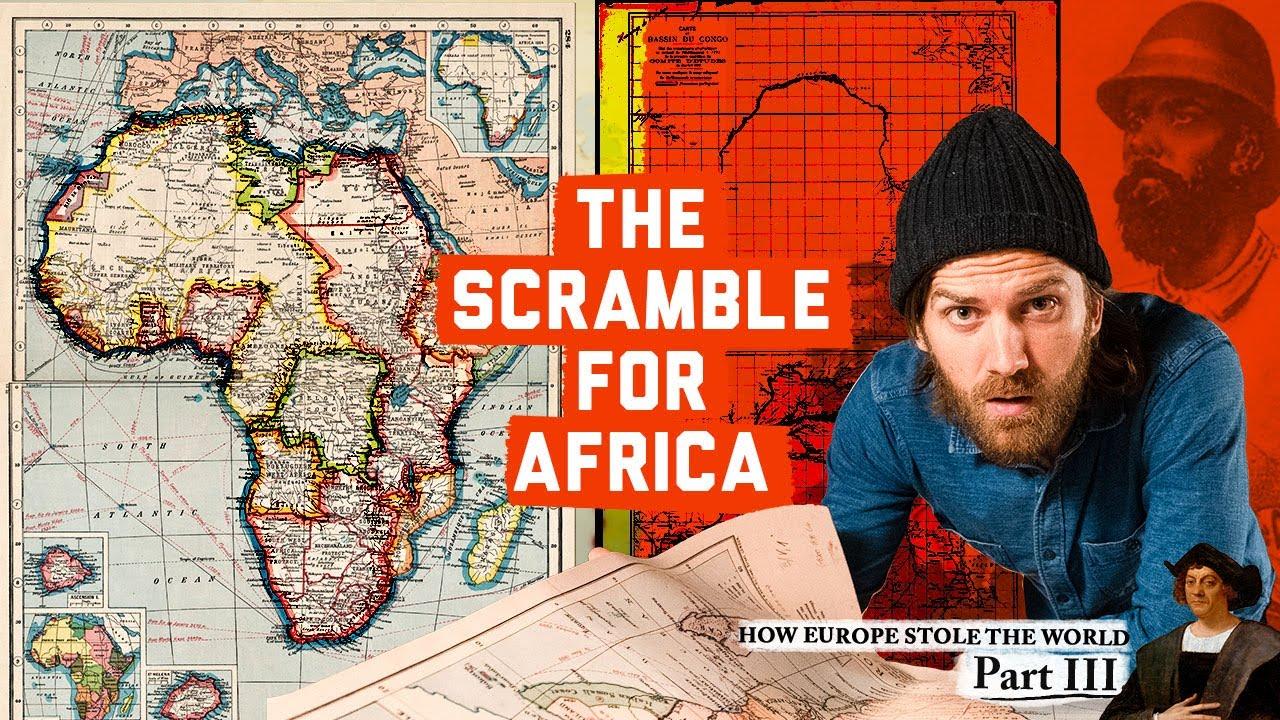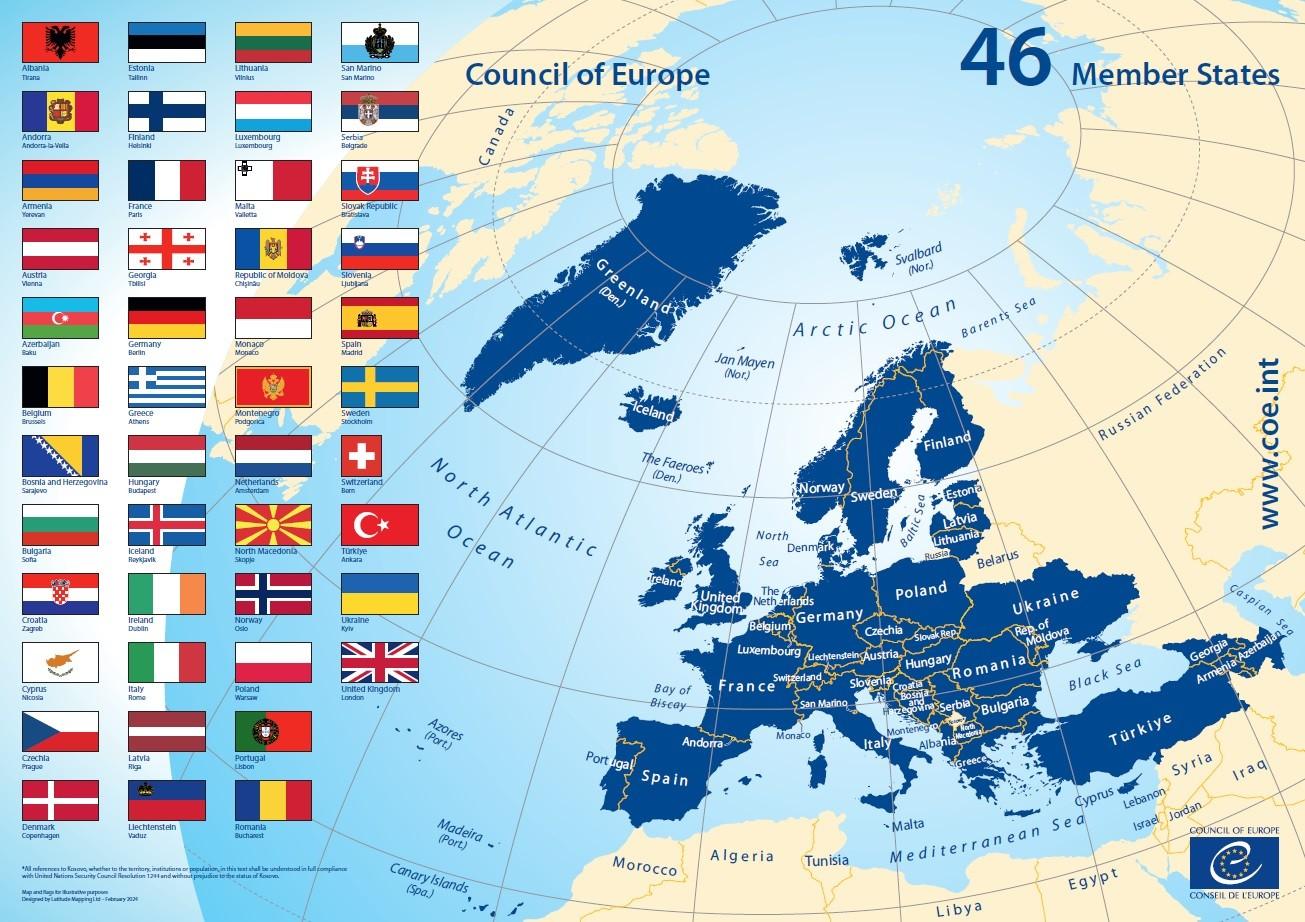
Colonial Quickening: Unpacking Europe’s Rush on Africa
In the grand tapestry of global history, there are patterns etched so deeply into the fabric of our past that they continue to shape the contours of our present. One such indelible pattern is the story of European colonization, an epic saga punctuated by an era of accelerated ambition – a period that reshaped not just maps, but the very socio-economic dynamics of the world. Welcome to the intriguing narrative of the “Colonial Quickening: Unpacking Europe’s Rush on Africa,” a riveting journey that situates us squarely before the puzzle of Europe’s intensified scramble for territorial dominion.
In this thought-provoking blog post, we delve into the incredible stretch of a mere century during which the face of our planet was transformed beyond recognition by European powers. Cast your gaze upon the global cartography of the 1800s, where a mere 35 percent was under European control, only to witness a staggering 84 percent claimed by 1914. The alchemy that catalyzed this usurpation lies deeply rooted in the second-largest continent – Africa – the final frontier of European expansionism, where the confluence of technology, economic ambition, and geopolitical maneuvering cocooned in the chrysalis of colonialism, soon to unfurl across the plains, mountains, and coasts of this vast expanse.
Embark with us as we explore cartography’s golden age and dissect the myriad factors contributing to what one British Prime Minister ruefully termed “the vulgar and bastard imperialism.” Delve into the ripples of the past that continue to lap at the shores of our contemporary global village, from the commodities that stock our shelves to the languages that unite and divide us.
In this multifaceted exploration, we’ll revisit an era marked by the pulsing beat of clashing empires and the quiet, persisting rhythm of impending revolutions. Uncover the nuanced truths as we confront the near miss of European domination’s derailment at the cusp of the 1800s, and the revolutionary fervor that almost redrew the world’s power lines.
Join us as we unravel the final chapter of how Europe, in its relentless quest for wealth and influence, etched its legacy upon the world – a chronicle that bloomed into an age of Imperialism 2.0. This is more than a testimony to conquest; it is a revelation of the awe-inspiring and terrifying power of human ambition.
The End of Isolation: Europe’s Takeover Begins

Blog Post Title: Pet Guinea Pigs in 16th Century Europe
Introduction:
Did you know that pet guinea pigs were a beloved companion in 16th-century Europe? In a recent YouTube video, we delved into the fascinating history of these furry critters and their significance in the lives of Europeans during that time [1].
Body:
The video highlighted how guinea pigs were not just household pets but also served as symbols of social status and wealth. Nobles often adorned their palaces with these cute creatures, showcasing their lavish lifestyle and appreciation for exotic animals. Furthermore, guinea pigs were valued for their warmth and companionship, offering comfort to their owners in a time when such connections were rare.
Despite their small size, guinea pigs played a significant role in 16th-century European society, bridging gaps between individuals and providing a source of joy and entertainment. The video touched on how these pets were cared for, showing the affection and attention lavished upon them by their owners.
Conclusion:
In conclusion, the history of pet guinea pigs in 16th-century Europe sheds light on a unique aspect of societal norms and values during that era. These furry companions were more than just animals; they were cherished members of households, bringing happiness and warmth to their owners. Through this video, we gained a deeper understanding of the significance of guinea pigs in history and their enduring impact on European culture.
Stay tuned for more captivating insights and stories from our YouTube video analyses at Roots Afrikiko!
Blog Post Title: Robert Mugabe’s Speech to Zimbabwe (as multiple posts are needed)
Introduction:
Robert Mugabe’s political legacy in Zimbabwe is a topic of immense interest and controversy. A recent YouTube video delved into Mugabe’s first speech to the nation in 1980 [3], unraveling the complexities of his leadership and the impact it had on the country.
Body:
The video provided a critical analysis of Mugabe’s speech, highlighting the promises he made to the people of Zimbabwe and the subsequent challenges faced by the nation under his rule. Mugabe’s leadership style was scrutinized, with a focus on the socio-political changes that unfolded during his tenure.
The speech reflected Mugabe’s vision for Zimbabwe as a united and prosperous nation, yet the reality painted a different picture. The video delved into the aftermath of Mugabe’s policies and the lasting effects they had on the economic and social fabric of the country.
Conclusion:
As we reflect on Mugabe’s speech and the legacy he left behind, it is clear that his leadership was a double-edged sword, marked by both achievements and failures. Through this video analysis, we gain a deeper understanding of Zimbabwe’s history and the complexities of governance in the region.
Join us on Roots Afrikiko for more enlightening analyses of historical speeches and events, providing insight into the intricate tapestry of African politics and society.
Mapping the World: The Role of Cartography in Colonization

Based on the given search results, there are two potential subjects to create blog posts for Roots Afrikiko: Guinea Pigs in 16th Century Europe[1] and Ghanaian culture and cuisine, specifically Afrikiko Restaurant[3].
Blog Post Topic 1: Exploring the Legacy of Pet Guinea Pigs in 16th Century Europe
Introduction:
In this blog post, we delve into the historical significance of pet guinea pigs in 16th century Europe, shedding light on their role as adorable companions. While many may not be aware of the cultural importance these furry critters had during that period, our analysis will unveil their captivating journey.
Body:
We explore the reasons behind the popularity of guinea pigs as pets in 16th century Europe, their symbolism in art and literature, and their unique presence in households of the past. Understanding the emotional connection people had with these tiny creatures provides a glimpse into the past and the relationships humans formed with animals.
Conclusion:
As we conclude our exploration of pet guinea pigs in 16th century Europe, it’s evident that these creatures not only brought joy to households but also served as a symbol of companionship and affection. Their legacy continues to remind us of the profound bond between humans and animals throughout history.
Blog Post Topic 2: Indulging in Ghanaian Cuisine at Afrikiko Restaurant
Introduction:
Embark on a culinary journey with us as we uncover the flavors and traditions of Ghana through the delectable offerings of Afrikiko Restaurant. From rich stews to flavorful spices, this gastronomic experience will transport you to the heart of Ghana’s vibrant food culture.
Body:
We delve into the diverse menu of Afrikiko Restaurant, exploring signature dishes, cooking techniques, and the cultural significance behind Ghanaian cuisine. From the use of fresh ingredients to the fusion of traditional flavors, each bite tells a story of Ghana’s rich culinary heritage.
Conclusion:
As we savor the last bite of our meal at Afrikiko Restaurant, it’s clear that Ghanaian cuisine is a celebration of flavors, history, and community. Whether you’re a seasoned food enthusiast or a curious newcomer, the experience of dining at Afrikiko is a testament to the warmth and hospitality of Ghanaian culture.
By crafting engaging blog posts in this format, Roots Afrikiko can effectively share insights and evoke curiosity in their audience, creating a blend of informative content and SEO-friendly writing that captivates readers.
Imperialism 2.0: Technology and Cooperation Fuel Expansion

Subject: Dr. | Ghanaian Food Blogger’s TikTok Video on Kyikyinga
Introduction
In a delightful TikTok video, Dr. | Ghanaian Food Blogger (@_thefoodiedoctor) shares her favorite recipe for Kyikyinga, a popular Ghanaian dish that is sure to tantalize your taste buds. With 19.3K likes and 270 comments, it’s evident that this recipe has captured the hearts of many food enthusiasts[1].
Body
Dr. | Ghanaian Food Blogger’s video showcases the process of preparing Kyikyinga, a skewered meat dish infused with robust flavors and spices. From marinating the meat to grilling it to perfection, every step is detailed with precision, making it easy for viewers to replicate the recipe in their own kitchens. The visual appeal of the dish, coupled with Dr.’s enthusiastic narration, adds an extra layer of charm to the cooking experience.
Conclusion
In conclusion, Dr. | Ghanaian Food Blogger’s TikTok video on Kyikyinga is a must-watch for anyone looking to explore the rich culinary heritage of Ghana. By following her simple yet effective instructions, you can embark on a culinary journey that celebrates traditional flavors and ingredients. Whether you’re a seasoned cook or a novice in the kitchen, this recipe is sure to elevate your cooking skills and leave you craving for more delicious Ghanaian dishes. Dive into this flavorful adventure with Dr. today!
Subject: Naa Oyoo Quartey’s Experience with Opening a Restaurant
Introduction
Navigating the challenges of opening a restaurant can be a daunting task, as highlighted by Naa Oyoo Quartey’s candid account of her journey. From dealing with potholes on the Nana Krom road to managing her baby’s teething troubles, Naa’s story offers a glimpse into the realities of running a business in the midst of personal challenges[2].
Body
Naa Oyoo Quartey’s narrative sheds light on the various obstacles she faced while trying to establish her restaurant. The roadblocks, both literal and metaphorical, symbolize the resilience and determination required to overcome setbacks in the pursuit of one’s dreams. Through her story, Naa inspires others to persevere in the face of adversity and find strength in the midst of chaos.
Conclusion
In conclusion, Naa Oyoo Quartey’s resilience and tenacity serve as a beacon of hope for aspiring entrepreneurs facing similar challenges. Her story is a testament to the power of perseverance and the importance of staying true to your goals, even when faced with seemingly insurmountable obstacles. Let Naa’s journey be a source of motivation and encouragement for those embarking on their own entrepreneurial endeavors, reminding them that success is possible with unwavering determination and resilience.
A New Marketplace: The Global Impact of European Corporations

Blog Post: Enhancing Speech Development Through Human Interaction
Introduction
In today’s technology-driven world, many parents turn to educational shows on TV and YouTube Kids to aid in their child’s speech development. However, the best way for speech development remains human interaction and the use of one’s own voice[1]. While educational shows have their place, the benefits of authentic human communication cannot be understated.
Body
Research suggests that the quality of interactions between a child and their caregiver has a direct impact on language development. When we engage in face-to-face conversations, children have the opportunity to learn social cues, facial expressions, and various intonations that are essential for language learning. Additionally, the back-and-forth exchange that occurs during human interaction helps children develop their conversational skills and expand their vocabulary[1].
Conclusion
In conclusion, while educational shows can be helpful supplements, they should not replace the valuable interactions that occur between children and caregivers. Human interaction provides unique benefits that cannot be replicated through screens or technology. By prioritizing face-to-face conversations and engaging in meaningful interactions, parents can play a significant role in enhancing their child’s speech development[1].
Blog Post: Uncovering Accra’s Hidden Gems at the Accra Zoo
Introduction
While exploring Accra, one might overlook the Accra Zoo due to its lowkey nature and small scale[2]. However, this gem deserves a closer look as it offers a unique experience for visitors seeking to delve into the city’s lesser-known attractions.
Body
The Accra Zoo may be compact, but it showcases a variety of wildlife native to Ghana. From colorful birds to playful monkeys, visitors can observe and learn about the region’s biodiversity. The intimate setting allows for up-close encounters with the animals, providing a memorable and educational experience for both children and adults[2].
Conclusion
In conclusion, the Accra Zoo offers a different perspective of Accra’s wildlife and serves as a hidden gem waiting to be explored. By visiting this charming zoo, guests can appreciate Ghana’s natural beauty and learn more about the diverse wildlife that calls the region home[2].
Future Outlook
In reflecting on the captivating journey through history outlined in the YouTube video “Colonial Quickening: Unpacking Europe’s Rush on Africa,” it becomes evident that the geopolitical landscape underwent a dramatic transformation over a mere century. From Europe controlling a fraction of the world’s land in 1800 to an astonishing 84% by 1914, the colonial expansion was nothing short of mind-boggling.
This account highlights the pivotal role Africa played in shaping the course of global history, serving as the battleground where technology, ideology, and imperial ambition converged to redefine the world order. The legacy of this era echoes through our present-day reality, influencing trade patterns, language distribution, and geopolitical power dynamics, making it a living testament to the enduring impact of colonialism.
As we navigate through the intricate web of colonization, it is essential to acknowledge the complexities and consequences of imperialism 2.0, characterized by technological advancements and cooperative empire-building endeavors. The narratives of domination and resistance unfold against the backdrop of a rapidly changing world, challenging the notion of European hegemony as an inevitable outcome.
As we delve deeper into the intricacies of history, let us not forget the voices of those marginalized and oppressed by the colonial machine. By unraveling the layers of the past, we gain a deeper understanding of the forces that have shaped our present reality, inviting reflection, dialogue, and a commitment to a more inclusive and just future.









